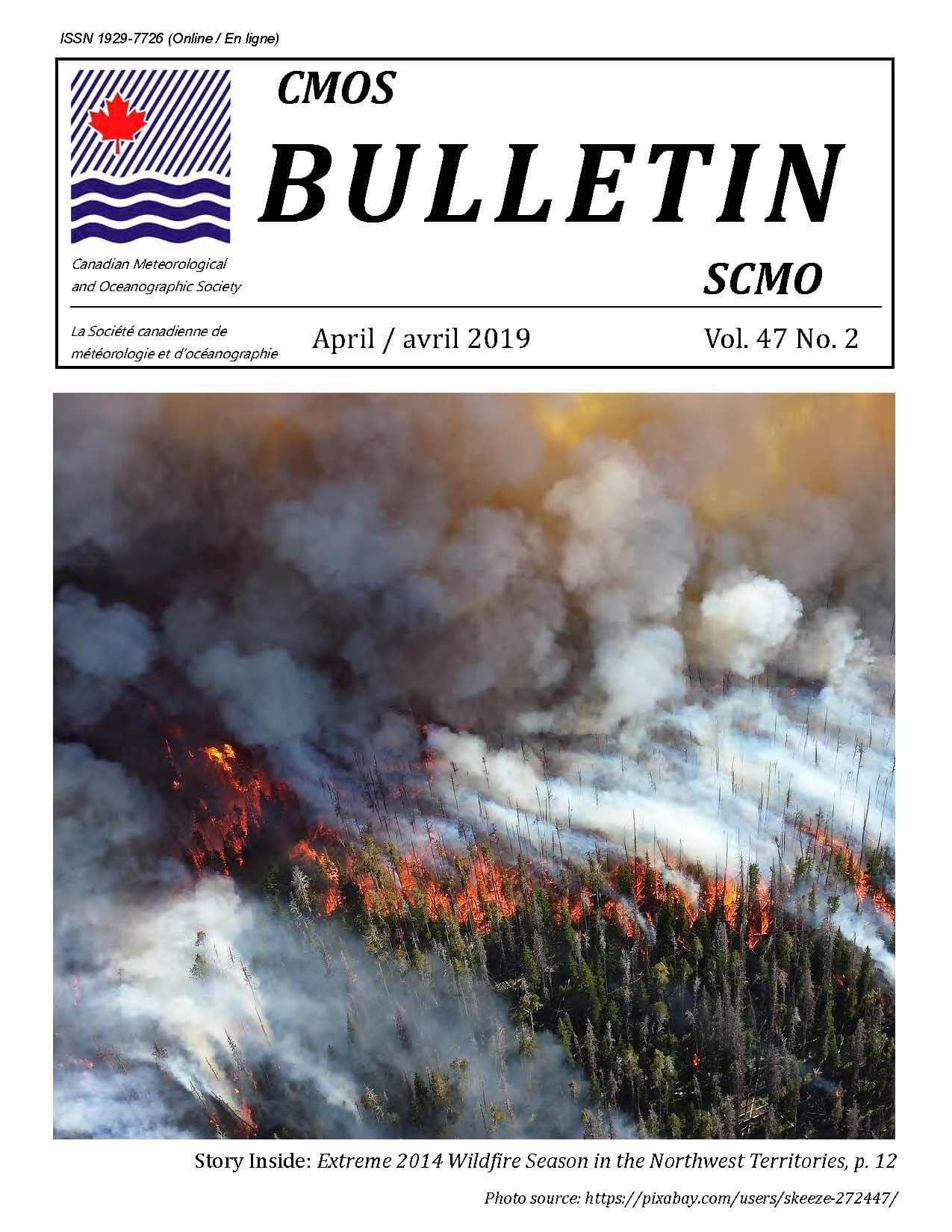Author: CMOS Bulletin SCMO
– By M. Markovic, M. Alarie, Environment and Climate Change Canada –
Seasonal Outlook for summer 2019 (June, July, August) in Canada includes warmer temperatures in British Columbia and the...
In Memoriam: Wayne Evans
Dr. Wayne Evans, Adjunct Professor in the Centre for Research in Earth and Space Science (CRESS) at York University from 1976 onwards, passed away in Seattle, Washington on April 27th, 2019....
Message from the CMOS President for April 2019: Building Resilience to Climate Change, with Grace under Pressure
– By Paul Kushner, Professor, Department of Physics, University of Toronto and CMOS President –
The warnings started in mid April: a deep and rapidly melting central/eastern Canadian snowpack and...
Extreme 2014 wildfire season in the Northwest Territories
– By Bob Kochtubajda1, Ron Stewart2, Mike Flannigan3, Barrie Bonsal1, Charles Cuell4, and Curtis Mooney1 –
1. Environment and Climate Change Canada; 2. University of Manitoba,...
Canada’s Changing Climate Report (CCCR)
Scientists from Environment and Climate Change Canada, Fisheries and Oceans Canada and Natural Resources Canada, and university experts collaborated to produce Canada’s Changing Climate Report...
Canadian Weathercasters as Climate Change Communicators
– By Bronwyn McIlroy-Young, Institute for Resources, Environment, and Sustainability, University of British Columbia –
Canadians are increasingly looking for information about how...
Supporting the Next Generation of Arctic Researchers
– By Chantal Mears, Dalhousie University, Halifax –
I had the pleasure of chatting with Dalhousie undergraduate student Chantal Mears at the 2018 CMOS Congress in Halifax. Chantal went...









